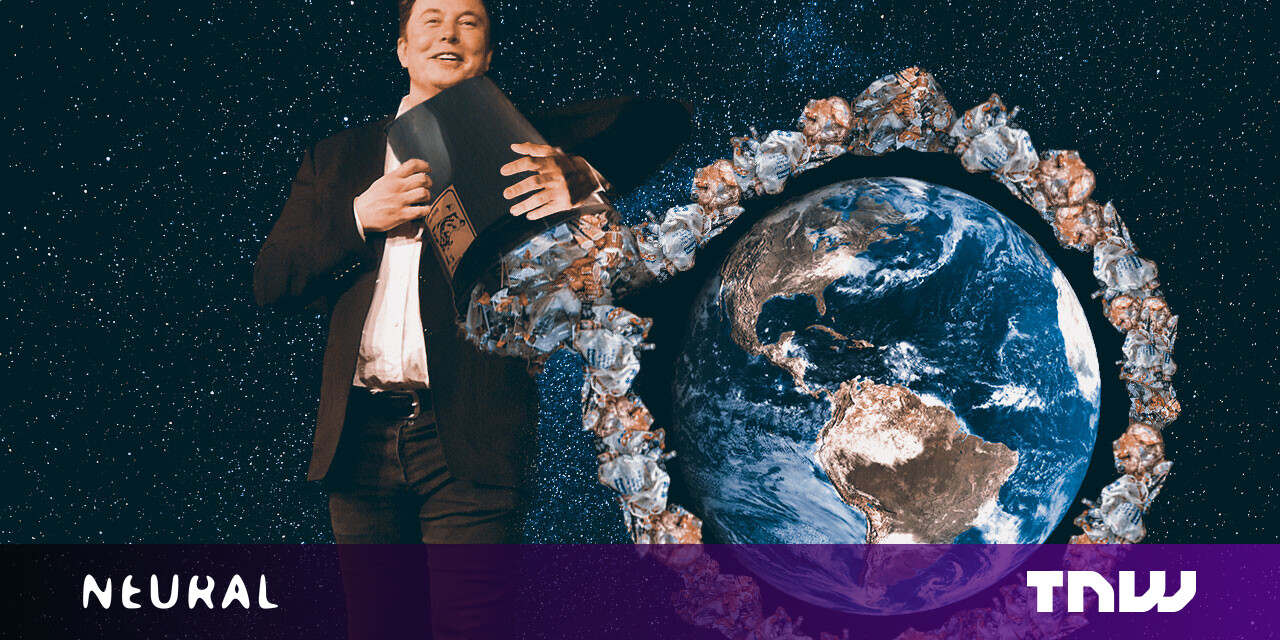
Everybody deserves to have internet access. It’s as crucial to our ability to thrive in modern society as running water and electricity.
Getting that access to rural and/or impoverished areas is one of the great technology challenges of our time. Unfortunately, the people who’ve stepped up the most are those hoping to profit from humanity’s problems at any cost.
To that end, companies such as SpaceX, Amazon, OneWeb, and StarNet/GW have decided it’s in their financial best interest to capitalize on the problem by littering the Earth’s orbit with tens of thousands of satellites meant to provide internet services to those who, otherwise, might not have access.
Currently more than half of all operational satellites orbiting the Earth are SpaceX satellites. The vast majority of which were designed and launched with little or no consideration concerning how reflective they are.
What does that mean, scientifically speaking? It means in the near future there will be no place on Earth from which any living being can gaze upon the naked night sky again. Ever.
According to simulations from a team of Canadian astrophysicists (who specialize in research that’s currently being harmed by light pollution from big tech’s satellites), a whopping one in fifteen sources of light we see in the night sky will soon be artificial.
Whether you’re standing at the North Pole, the South Pole, the equator, or anywhere in-between: the 65,000+ satellites that big tech companies plan to litter the sky with will ensure you never see the night sky again as your grandparents did.
And, sadly, there’s no turning back. According to the Canadian research team, even if SpaceX and other companies continue to focus on designing less-reflective satellites, our view of the night sky is essentially changed forever.
Per the team’s paper:
The simulations presented here show how the effects of satcons are a long-term change to the night sky worldwide, which is a shared resource enjoyed and used by humanity.
There is simply no way to have tens of thousands of satellites in Low Earth Orbit and avoid consequences for astronomy.
But with strong, international cooperation and appropriate regulation of satellite numbers, reflectivities, and satellite broadcasting, we can perhaps reach a compromise that allows much of research astronomy and traditional naked-eye stargazing to continue with minor losses.
Unfortunately, any expectations of “strong, international cooperation” and “appropriate regulation of satellite numbers” is pie-in-the-sky fantasy.
We may as well ask the US and Chinese governments to set their differences aside and become a single nation together. There’s a better chance of that happening than Elon Musk or Jeff Bezos deciding to regulate their own multi-billion (trillion! in the case of Bezos) dollar enterprises for the good of humanity.
The simple fact of the matter is there’s next to no regulations concerning civilian enterprises in Earth’s orbit. If SpaceX and Amazon want to fill the night sky so completely that we can’t squeeze a glance at a real star through the light pollution, there’s not much to stop them – something that’s evident by the fact that tens of thousands of more satellites are scheduled to enter the skies over the course of the next handful of years.
Worse, most of these satellites will only have a short lifespan. That means they’ll be regularly deorbited and replaced – and by “deorbited” we mean moved out of the way and left in the Earth’s upper atmosphere where they’ll become highly-reflective space trash.
Per an article on Phys.Org by the paper’s lead author, astrophysicist Samantha Lawler:
Starlink plans to replace each of the 42,000 satellites [that it’s planning to launch] after five years of operation, which will require de-orbiting an average 25 satellites per day, about six tons of material.
The mass of these satellites won’t go away—it will be deposited in the upper atmosphere. Because satellites comprise mostly aluminum alloys, they may form alumina particles as they vaporize in the upper atmosphere, potentially destroying ozone and causing global temperature changes.
This has not yet been studied in-depth because low Earth orbit is not currently subject to any environmental regulations.
So let’s summarize:
- If you’re over the age of four-years-old, you can no longer see the night sky as it looked when you were born.
- Within a matter of years, approximately one in every 15 sources of light in the night sky visible to the naked eye from Earth will be artificial.
- Whether you use satellite internet from SpaceX or Amazon is irrelevant. There’s no regulation stopping big tech from astrocolonization – taking something that belongs to everyone and claiming it for themselves. You don’t get a vote in whether you get to see the stars or not.
On the bright side, however: Elon Musk and Jeff Bezos are the richest people who have ever lived. You get to be a part of that. Our collective willingness to let these men destroy our natural resources is their greatest business asset.
I can’t wait to see what else we’ll lose, as a species, in service of Elon and Jeff’s fortunes.